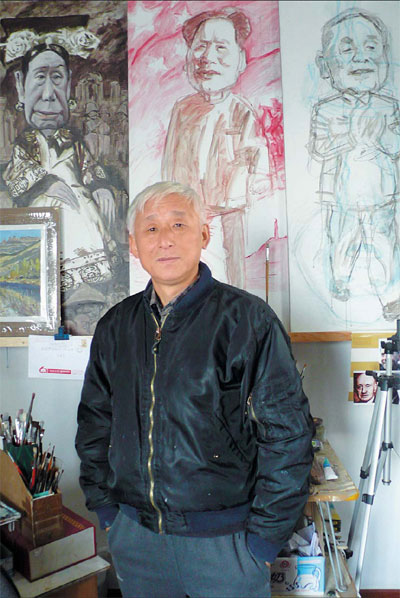Life and Leisure
Drawn to the movies
By Chen Yingying and Wen Chihua (China Features)
Updated: 2010-11-18 07:49
 |
Large Medium Small |
|
|
As recently as the 1990s, Chinese film posters were hand-painted conversation pieces that enticed audiences into the theaters. Chen Yingying and Wen Chihua from China Features report
Beijing lift operator Zhang Yueqing took a break from her job every night for a week so she could see a recent exhibition of vintage hand-painted China-related film posters called Movie China Art. "They remind you of the movies you watched and the times they were set in," says the 40-year-old migrant worker from northeastern Heilongjiang province.
Zhang was a big movie fan in the 1980s when she still lived in remote Fenpin village. "A film projection team, usually comprising two persons, would regularly come to show a movie in the open air in our village," she says. "They carried the projector on a donkey cart."
When the movie was over, Zhang and her friends would follow the projectionist, walking miles to other villages to watch the film again and again.
She has not seen any movies since coming to Beijing in 2003. "I would lose interest in going to the movie after seeing the film's posters," she says.
"Computer-designed, glossy posters for films like the blockbuster Hero directed by Zhang Yimou make me feel the films of today are too removed from my life. So I don't bother to go to the cinemas."
Indeed, compared to printed posters, hand-painted ones are "simple, pure and humane. They attract audiences to see the movies", says Cui Yongyuan, host of the Movie Stories series of CCTV.
Cui, 47, recalls that, when he was a little boy, he wanted to be a film poster painter. "At that time, almost every Chinese was a movie fan and painting posters was an enviable job because the painters got to see lots of movies for free."
In fact, before the 1990s, when computers made poster-making easier and faster, almost all film posters in China were hand-painted by artists who worked for the local movie theater.
The first hand-painted Chinese film posters, in the 1920s, about 20 years after the first Chinese film Dingjun Mountain was made, appeared on billboards.
"A typical poster carried a close-up of the heroine, against a blurred background," recalls Xiao Ge, a former poster painter in Chongqing.
As for the colors, she says, "bright orange and red were often used, whereas black and white were taboo. And, of course, anything that might suggest violence, such as blood and killing, was forbidden".
Film poster painting is different from oil painting and poster art. "It requires a more sentimental involvement with the film. You need to live with the characters in the film you paint for, weeping and laughing with them," she says.
The 1980s witnessed a boom in hand-painted movie posters. This was a period of artistic renaissance for most Chinese, who had just gone through the decade-long chaotic "cultural revolution" (1966-76). The government lifted the ban on 376 old Chinese films, which had been denounced as feudalistic, capitalistic and revisionist works during the "cultural revolution" and poster artists found themselves with a lot of work.
While these painters had some artistic talent, most had no formal education in art. The poster painter would also double as usher or ticket seller when required.
